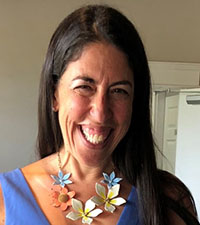The health sector has a responsibility to support people who face intimate partner violence, but it is most effective when approaches are trauma informed and centered around survivors’ individual needs, say Jackie Savage-Borne and Amrapali Maitra
In a recent report by the World Health Organization (WHO), intimate partner violence (IPV) is described as a “major public health problem” warranting a health sector response.
As a clinical social worker who manages a hospital based domestic violence program and a doctor who practices women’s health and studies IPV, we know that IPV is widely prevalent and causes serious health consequences. The WHO multicountry study revealed that almost one in three women worldwide have experienced physical or sexual violence by their intimate partner. The covid-19 pandemic has only fueled the risk factors for violence and hampered responses to it, while the dual pandemic of racism has highlighted inequities in lived experiences (see our previous BMJ Opinion). Many survivors choose not to or are unable to safely reveal their abuse to family members, friends, or social services. As a result, disclosures may happen in the neutral, confidential space of a doctor’s office.
We strongly believe that the health sector has a role and responsibility to support people who face interpersonal violence. We acknowledge, however, that a health sector response is not easy, nor is it enough. Survivor centered approaches to IPV take time, resources, and institutional investment. Even if the health sector responds perfectly, it is not a panacea. Given the overlap of IPV with other forms of structural violence, we need social measures like poverty reduction, housing access, fair wages, stigma-free care for substance use disorder, and access to education and childcare (elaborated in the WHO’s 2019 RESPECT framework) in order to eradicate IPV.
We describe three barriers to health sector responses to IPV and propose solutions:
Barrier 1: Screening for IPV takes time, training, and resources
The first step to responding to IPV is identification. Universal screening offers ongoing opportunities for people to disclose abuse within a healthcare setting, thereby increasing access to safety and choice. While many professional societies have called for universal screening of all patients for IPV (e.g. American College of Obstetricians and Gynecologists), there are significant barriers. Screening takes time, training, and resources. When survivors are unable to disclose or not ready to seek help, healthcare providers may feel frustrated or anxious.
Solution: We should see screening itself as an intervention, situated in longitudinal relationships. This can normalize and universalize IPV to transform institutional culture.
Screening is not an isolated event but one interaction of many in a longitudinal patient-provider relationship, particularly in primary healthcare. We should train providers to screen at every opportunity. Opening statements such as “I ask all my patients these questions because intimate partner abuse affects so many people…” serve as an invitation to patients and send the message that IPV is an integrated healthcare issue. Importantly, it normalizes and universalizes IPV for both providers and survivors.
Furthermore, the endpoint of screening should be reframed: while its purpose may be to identify violence, screening itself is an intervention. A positive screen provides an opportunity to connect a survivor to a range of resources. But even if a survivor is not ready to accept this referral, or to make a disclosure, the act of listening is a therapeutic response that builds trust, empathy, and may facilitate future help seeking behavior.
Barrier 2: Health sector responses may presume a universal definition of safety, yet safety is contextual for survivors, and the effect of IPV on lived experiences are not equitable
Inequities and marginalization (such as racism, xenophobia, heteronormativity, and transphobia) affect every facet of the experience of IPV—from seeking any kind of medical care to disclosing abuse to considering interventions. “Safety” is differentially possible given identities and lived experiences.
Solution: We must acknowledge safety holistically in the context of survivors’ identities and lived experiences.
Healthcare responses to IPV have historically been focused on a narrow definition of safety that presumes escaping the abusive partner and seeking legal help. Survivors often perceive healthcare providers as advocating for leaving the relationship, which may be discordant with their own desires or safety assessment. Many options offered to survivors (e.g., restraining orders, police intervention, shelter) are located in the very systems that marginalize survivors from racial and ethnic minorities.
A holistic view of safety is critical, one that attends to equity and the intersectionality of oppression. Such an approach resists revictimization and centers the survivor’s expertise and autonomy in their own lives.
Barrier 3: The paternalistic nature of health sector interventions reinscribes normative dynamics of power and control with IPV survivors
Ideally, IPV services should be embedded in every healthcare organization. But to truly provide comprehensive care, we need to question the paternalistic assumptions of the medical model. Though providers do not set out to hold power and control in their care delivery, this unintended impact often occurs (illustrated in the Medical Power and Control Wheel).
Solution: We need to train healthcare providers in an IPV framework that is trauma informed and survivor centered.
The tenets of trauma informed care are counter to how medicine is often practiced. But acknowledging the differences between traditional healthcare dynamics and a trauma informed approach can help to integrate a survivor centered model. Many survivors will not be ready to disclose abuse. Many who disclose abuse will not be ready to engage with services. Many who are ready to engage with services will not be ready to take any action. Many who will be ready to take action will not do so in a linear way. The pace of empowerment based advocacy differs from traditional healthcare. Ambivalence should be an expected part of working with survivors. We lean on the wisdom of survivors, many of whom share how their reasons for staying in an abusive relationship can be a complicated tangle of fear, love, and hope.
Interpersonal experiences, even those that include violence, are complex and emotionally laden. Choices are never straightforward. As healthcare providers, we must forego “one size fits all” remedies. By sidelining ambivalence and nuance, the health sector risks reeling from the vicarious trauma of providers. But by empowering survivors through trauma informed approaches, we may cultivate vicarious resilience in providers too.
Despite the complexities involved, the health sector has the potential and responsibility to respond to IPV. Instead of reinscribing the norms for responses and interventions, healthcare providers could be transformative (i.e., decolonial, anti-racist, inclusive), but only if we invest in adequate training and support. The WHO report underscores our tremendous opportunity to shift practice and culture for health sector responses to IPV using a framework that is trauma informed and centered around survivors.
 Jackie Savage-Borne is a social worker; adjunct faculty at Simmons School of Social Work; and the program manager of Passageway, the domestic violence advocacy program at Brigham and Women’s Hospital. Twitter @BorneSavage
Jackie Savage-Borne is a social worker; adjunct faculty at Simmons School of Social Work; and the program manager of Passageway, the domestic violence advocacy program at Brigham and Women’s Hospital. Twitter @BorneSavage
Competing interests: none declared.
 Amrapali Maitra is a resident physician in internal medicine at Brigham and Women’s Hospital in Boston, MA, and a medical anthropologist studying domestic violence. Twitter @amrapalimaitra
Amrapali Maitra is a resident physician in internal medicine at Brigham and Women’s Hospital in Boston, MA, and a medical anthropologist studying domestic violence. Twitter @amrapalimaitra
Competing interests: none declared.
